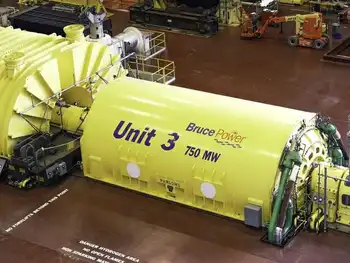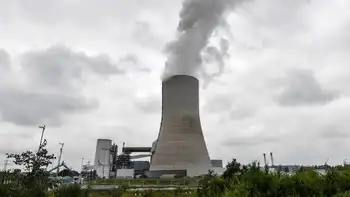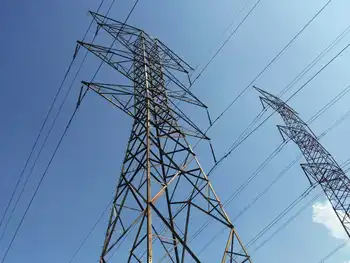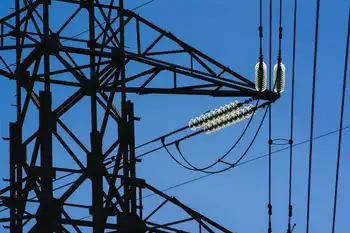Some see energy future in old mill dams
By Associated Press
Protective Relay Training - Basic
Our customized live online or in‑person group training can be delivered to your staff at your location.

- Live Online
- 12 hours Instructor-led
- Group Training Available
In other places as well, from the Stockport Mill Inn on southeastern Ohio's Muskingum River to the hydropower-rich Pacific Northwest to the old mill towns of New England, small hydroelectric projects are popping up in a bid for energy independence.
Yet hopes of turning waterways like Mill Brook into power sources are being dammed up by state and federal regulations meant to regulate huge hydroelectric projects.
The three-story brick armory in Windsor, which helped revolutionize manufacturing in the mid-19th century with the introduction of interchangeable parts, today is home to the American Precision Museum.
The museum is working with the 58-unit Armory Square apartment building across the brook to refurbish the old dam and produce hydroelectric power.
Small hydro advocates say their projects don't promise the economic payoff to justify environmental studies that can cost hundreds of thousands of dollars.
"Mostly, what we've received so far is an invitation to finance a lot of studies around fish populations and habitat," said Andy Broderick, president of the nonprofit affordable housing group Housing Vermont, which is refurbishing the apartment building in Windsor. "It just seems like we would spend a lot of money on feasibility studies... and never get a permit. The path to yes is not clear."
Armory Square developers also plan to use boilers that will burn biomass pellets and solar hot water panels on the roof, Broderick said, but hopes for bringing the dam back to life are at a standstill.
Ann Lawless, executive director of the Precision Museum, said she's also discouraged.
"It looks like it's going to be very challenging to make anything happen, because of the regulatory environment or the lack of parameters."
It's impossible to say how many projects have been stymied by the regulatory hurdles, as many never reach the formal permit application stage, officials said.
John Seebach, director of hydropower reform with the environmental group American Rivers, said some hydro projects — particularly those that use already existing dams — can work. But he said he doesn't want to see regulations pulled back.
"A lot of these smaller, sort of mom-and-pop hydropower projects are most notorious at having serious compliance issues over the life of the license," he said. "If something breaks... they don't have the money available to fix it."
Not everyone has been daunted by regulatory hurdles.
At the Stockport Mill Inn in Ohio, innkeeper Dottie Singer said the regulatory process took years but the result has been worth it. Water flowing over the old mill dam adjacent to the inn is run through twin turbines that more than offset the hotel and restaurant's annual electrical usage.
Excess power is sold to a regional utility.
The dam has generated business as well.
"We're in a remote area," Singer said. "But people like to see our dam. It's green energy. It's where we should be going, because it helps to protect our fragile, damaged environment."
Catherine Gjessing, director of policy research and planning at the Vermont Agency of Natural Resources, said the agency is working with the state Natural Resources Board to see whether a more streamlined regulatory process can be developed.
Both Gjessing and Celeste Miller, a spokeswoman for the FERC, said their agencies had seen a resurgence of interest in hydro projects as measured by contacts from people researching the possibility of developing small hydroelectric sites.
Several towns have installed turbines in municipal water systems, capturing energy as water flows from an uphill reservoir downhill to a population center. The southern Vermont town of Bennington has such a project under regulatory review; Boulder, Colo., already has one.
A 2006 study by the U.S. Department of Energy's Idaho National Laboratory found 130,000 stretches of stream around the country suitable for small hydro projects, defining small as those between 10 kilowatts and 30 megawatts. Theoretically, if they were all developed, they could provide about 100,000 megawatts of power — three times that used by the six New England states put together.
When environmental concerns and other limitations are taken into account, the potential likely is reduced to about 30,000 megawatts, said Douglas Hall, water energy program manager with the Idaho National Laboratory.
Linda Church Ciocci, executive director of the National Hydro-Power Association, said she understands environmental concerns over the potential impact to rivers and fish.
She thinks the government could help fund environmental studies for smaller projects.
"Relying on a small developer to come up with these costs is unrealistic," she said.
But smaller power dams should be part of any new energy plan for the nation.
It's unclear how many projects around the country have been dammed up with regulatory hurdles. Gjessing said she had had inquiries about roughly 20 potential projects in Vermont in the last two years, but only two had moved forward to the permitting process.
Lori Barg, a Vermont-based hydrologist whose firm, Community Hydro, has consulted on and developed projects in Hawaii, Oregon, Massachusetts and New Hampshire, said the biggest hurdle she faces in many places is a lack of clear regulatory guidelines.
She said if that problem were fixed, Vermont could be a national leader in development of small hydro sites.
"Vermont was built on hydropower," said Barg. "We have water and we have hills. Hydropower comes from water running down hills."











